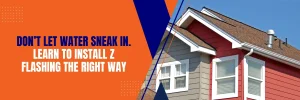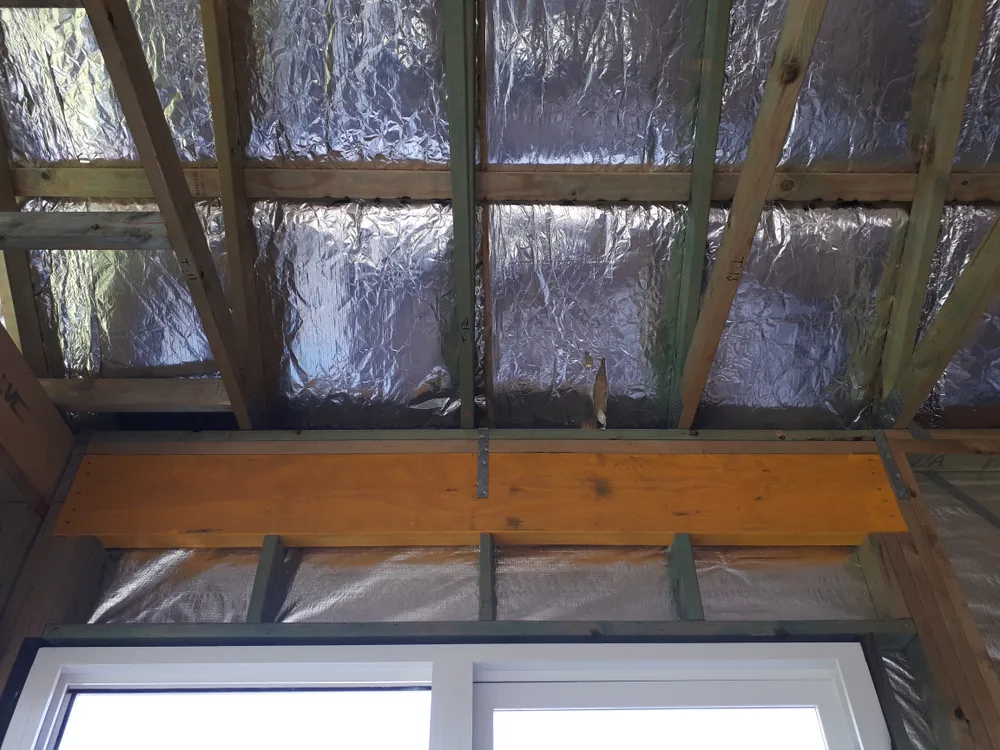
How To Install Z Flashing on T1-11 Sliding
If you’re working with T1-11 siding, you’ll know how important it is to keep moisture out. This textured plywood or OSB siding is durable, affordable,

The roof of your home should give you long-lasting protection from the weather, especially under violent storms and rain with glaring sunshine in between. Roof sark is an essential component of a protective roof that is frequently laid beneath metal or tile roofing and provides an extra layer of protection.
In essence, it functions as a barrier, shielding the house from extreme heat, dampness, and dust. Moreover, it is made to carry out necessary tasks like insulation and moisture management. In this article, we will go over the details of roof sarking, highlighting its purpose, methods of operation, advantages, and types.
Roof sarking is a thin, flexible sheet that is layered beneath the roof’s tiles. It improves the overall insulation of your home by adding a practical and resistant covering that helps reflect the sun’s radiant heat away from your house.
Again, with the sarking in place, rainwater is carefully directed into the roof gutters to prevent damage to the roof, even if it reaches the layer through the tiles.
Roof sarking is an effective and durable solution for shielding your building structure from weather when you are designing a new home or renovating an existing one.

As per the Building Code of Australia (BCA), roof sarking is a requirement for all contemporary building structures with tiled roofs and rafter lengths longer than six meters. Roof sarking is generally regarded as a good construction practice for all residential tiled and metal roofs in order to shield buildings from the infiltration of outside moisture and heat.
If you are remodeling your house or planning to construct a new house with metal or tile roofing, you would prefer to install roof sarking while considering the following parameters as set by the Building Code of Australia:
Installing sarking beneath your building’s roof surface provides you with various advantages, as given below.
Roof sarking helps insulate your house by controlling the heat flow. It helps retain heat during the chilly winter months, while in the summer, it reflects solar radiation to keep your house cool.
When installed correctly, sarking will contribute to raising your home’s overall R-value. The R-value measures how effectively an insulator restricts the passage of heat. Installing roof sarking most suitably by combining it with ceiling insulation improves the energy efficiency of your home through effective temperature control.
The type and extent of insulations vary depending on the environment; however, roof sarking generally helps save on power bills by providing a more comfortable and energy-efficient home interior.
To protect the structure from the external weather elements, roof sarking needs to be attached to the building frame prior to roof erection for new construction when your roof is being dismantled or when any remodeling or house modifications are going on.
The selection of sarking for the specific roof type is crucial to getting the most effective results. You should also ensure that your selection must comply with the requirements of the Australian Building Code (BCA).
It is recommended to engage an expert for the professional installation of roof sarking. A successful installation requires considering a number of factors, including air gaps, ventilation, vapor barriers, and thermal bridging, in order to be sure that the building is safeguarded.
When your house is under construction, or the roof needs to be replaced, installation is convenient. The property will be protected from weather conditions until its roofing is completed because of the early application of the roof sark.
Sarking not only aids in protecting our homes from harsh weather elements but also keeps them suitably insulated by regulating the temperature. This is highly beneficial in improving the temperature effectiveness of residential structures, which eventually addresses the issue of energy waste and its impact on climate change.
That’s why the Australian Building Code emphasizes the implementation of roof sarking as an effective means of addressing environmental issues.
If you are carrying out significant upgrades or expanding the structure of your house, consider setting up the sarking on an existing roof. It involves placing the flexible membrane precisely beneath the roofing material, so the ideal time to install sarking is during the construction process.
If you are replacing roof tiles, sarking needs to be done before the installation of new tiles. You can seek expert assistance from professionals who can apply the best installation techniques for various kinds of rooftops.
Repairing holes or tears in the roof sark is crucial since a damaged roof sark will not function as effectively as intended. If cracks or holes appear in the sarking, it decreases the thermal performance due to the impact of dust, moisture, and wind entering through holes in the sarking. There are specialty tapes available that can be used to repair the sarking damage.
The cost of roof sarking usually depends on the particular type of roof sarking you purchase, its weight, dimensions, and thermal efficiency. Typically, prices per square meter range between $2 and $3. Usually, a roll of 60 x 1.35 meters costs between $180 and $300.
If you are planning to complete roof restoration or construction, our professional team at Singh Roofing Supplies is ready to provide you with roof sarking installation, repair, and replacement services. We are committed to delivering you a high-quality roofing component that performs at its best.
Singh Roofing Supplies offers the extra-heavy-duty Rhino Tile Roof Sarking, which is a poly-woven fabric membrane combined with aluminum foil that provides an additional layer of protection for the building from wind, rain, and heat transfer.
By allowing us to help you with skilled roof sarking services, you will be making a long-term investment in protecting your building from weather hazards as well as ensuring comfort and energy efficiency in your home.
Adding a roof sark to your house is well worth the investment. In Australia, roof sarking is typically required for residential roofs and provides essential weather protection during and after construction. Roof sarking enhances thermal efficiency, improves durability, and provides efficient protection from fire, dust, and rain while ensuring cost-efficiency by minimizing maintenance and energy bills.

If you’re working with T1-11 siding, you’ll know how important it is to keep moisture out. This textured plywood or OSB siding is durable, affordable,

The Aussie sun is famously unforgiving. From Darwin’s blistering dry heat to Sydney’s blazing summer afternoons, the ultraviolet rays here are among the most intense